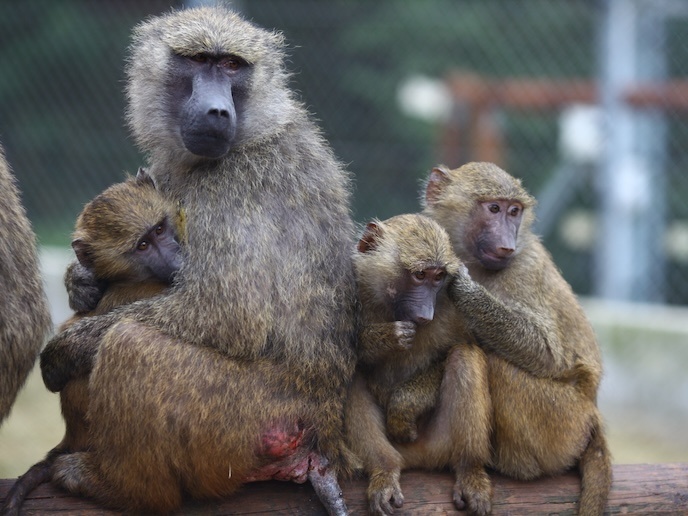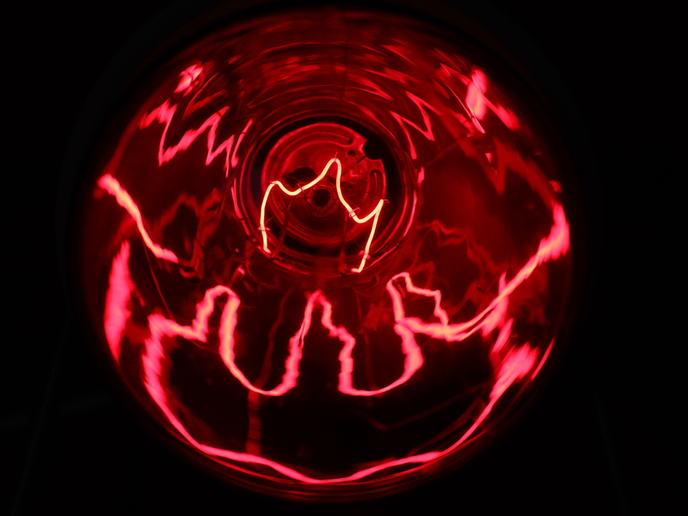Hand gesture use in baboons shines a light on our language evolution
Primates, human and non-human alike, have a lot in common when it comes to getting their message across. Our hand gestures might be more specialised – irate drivers, for example, can be very specific. But requests, submission and mitigation gestures are used by us all. We also share a rich vocal repertoire. Research has focused on the great apes and the complexity of their communication: monkeys have not attracted the same attention. However, Adrien Meguerditchian(opens in new window) is redressing the balance. For the last 20 years, Meguerditchian has been heading up a team conducting gestural research in Papio anubis baboons, an Old World monkey species. Through support from the European Research Council(opens in new window), part of that work was done by the GESTIMAGE project. The project wanted to establish whether the asymmetries in the brain hemispheres for language-related regions are associated in both humans and monkeys with the hand they use for gestural communication. “Most language functions, including gestures, involve more activations in the left brain whereas some others, such as musicality, involve the right hemisphere,” explains Meguerditchian. This, he adds, can be seen in language-related regions such as the planum temporale(opens in new window) (PT), or the anterior insula(opens in new window), which are bigger in the left hemisphere in comparison to the ones in the right hemisphere in humans. This is regardless of the direction of their hand preference. Past theory held that left-handed people have an ‘inverted lateralisation for language’, meaning the language-related regions in the right hemisphere are larger. But Meguerditchian points out: “It was recently found that it is not the case. A majority of both right-handed and left-handed people seem to have a similar left-hemisphere dominance for language, as well as bigger language-related regions in the left hemisphere at the structural level.” So, what is going on? Does handedness for communicative gesture impact on hemisphere asymmetry for language? To find out, Meguerditchian turned to his baboons.
Gestures and brain asymmetry in humans and baboons
The project considered hand movements in baboons and humans, dividing them into two categories: those used to convey meaning and communicate, and those used for non-communicative actions, such as during the manipulation of an object. The team considered about 83 humans for which MRI brain images were available, 106 non-invasive MRI scans of adult baboons and those of 30 newborn baboons. “We studied pointing gestures in humans and the movements, gestures and mother-infant behaviours of our baboons. We have also used data from video of their social interactions, gathered at the Primatology station of the French National Centre for Scientific Research(opens in new window) in Rousset, France,” adds Meguerditchian.
The evolutionary continuities of the gestural system
“The study is still ongoing in humans, but in baboons we have already found that, when it comes to gestures used to communicate, their related hand preference is associated with the brain’s asymmetries for language-related regions. This is regardless of their handedness for manipulative actions,” Meguerditchian says. Quantification of early brain structural asymmetry of a key structure for language, the PT, in newborn baboons revealed that a majority showed the typical left lateralisation, in a quasi-identical proportion to that found in human infants and adults. “Interestingly, only those ‘left-brain’ baboons, as they grew up, tended to develop a right-hand preference for gestural communication, but not for non-communicative actions.” This discovery implies that PT asymmetry is not just a neuroanatomical requirement for language development in humans but also one for the development of gestural communication in monkeys. Meguerditchian believes the project’s findings speak for the evolutionary continuities of the gestural system with language lateralisation, dating back – not to Hominidae – but to a much older common ancestor shared with Old World monkeys, 25-35 million years ago. “This ‘gestural’ path for the origins of language may have clinical implications for evaluating the possible impact of brain surgery. If we can determine, by measuring communicative gestures, which hemisphere is dominant for language, it could help avoid potential post-operative aphasia(opens in new window).”







